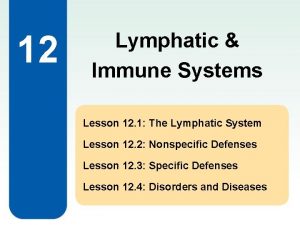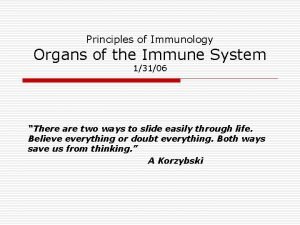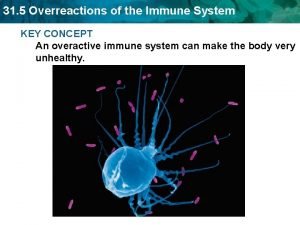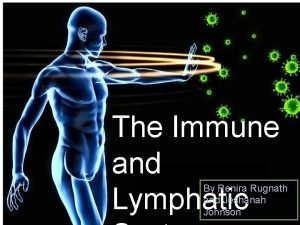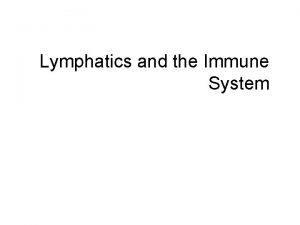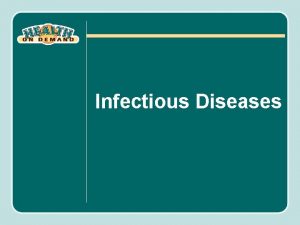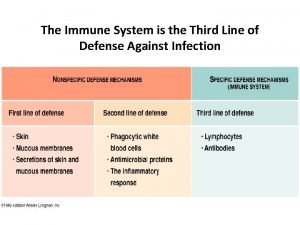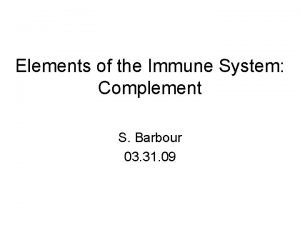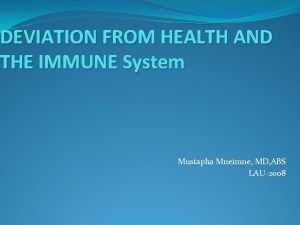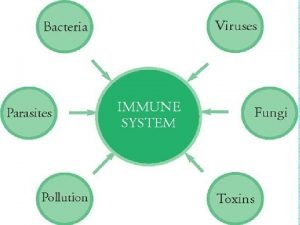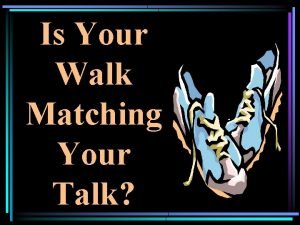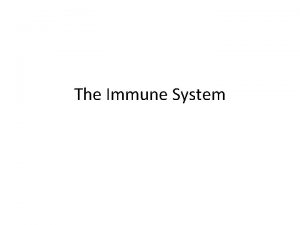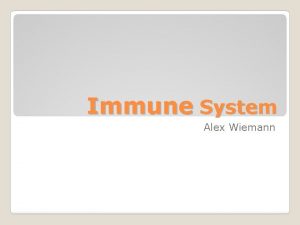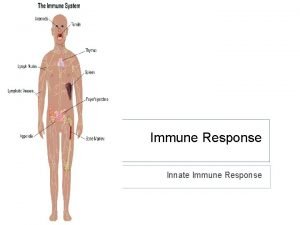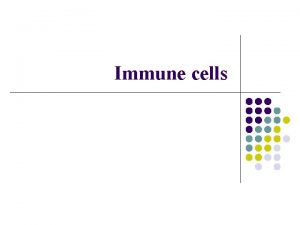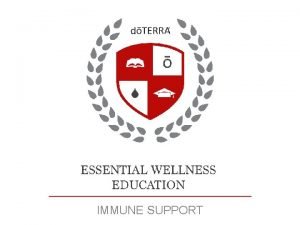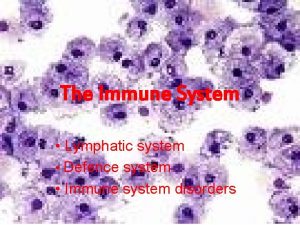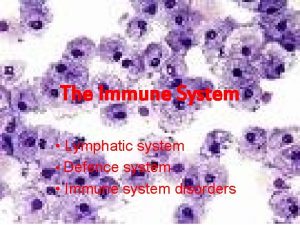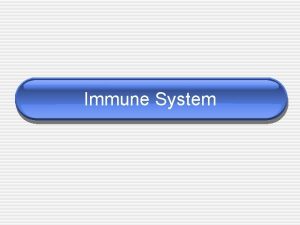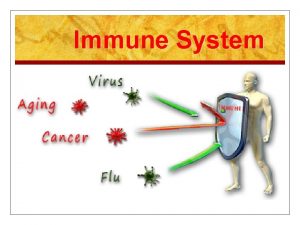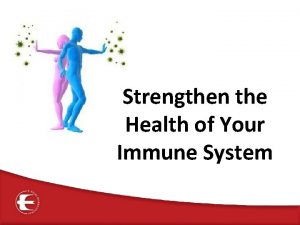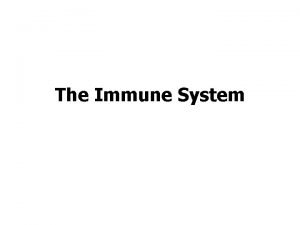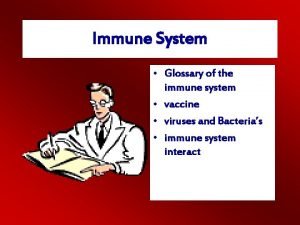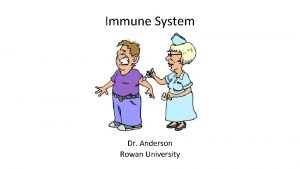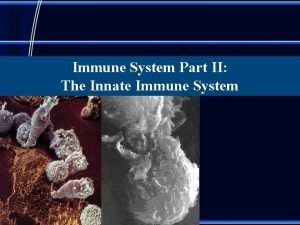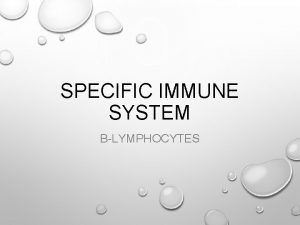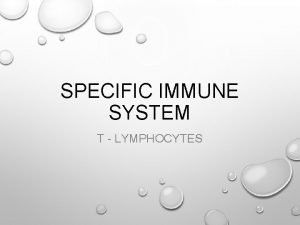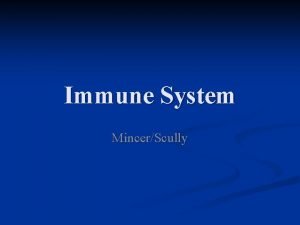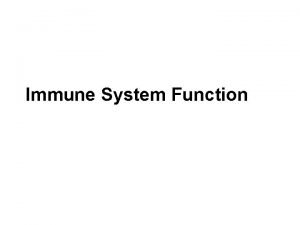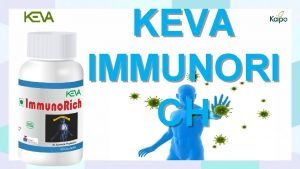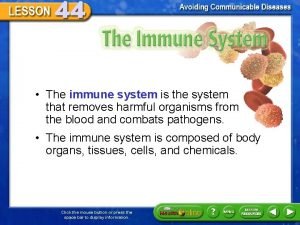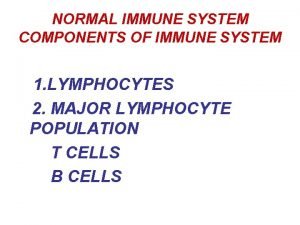The Immune System How does your Immune System
























- Slides: 24

The Immune System

How does your Immune System work? Ü https: //www. youtube. com/watch? v=PSRJfa. AYk. W 4

The Immune System In the year 1850, a patient had a 50% chance of survival after an operation. The surgeons used non-sterilized instruments and rarely washed their hands before performing an operation.

Foreign Substances Foreign substances: The things that invade your body 1. Pathogen: Ü An organism or substance that causes a disease Ü Can be living or non-living Ü Examples: bacteria, viruses, cancerous cells, germs 2. Antigen: Ü Any substance that your body does not recognize Ü Could cause a disease Ü Examples: splinter, metals, pathogens

Transmitting A Disease Ü Some diseases are infectious and can be transmitted by contact with: 1. A person 2. An animal 3. Water 4. Food In infectious diseases, pathogens are transmitted in 4 different ways.

Transmitting Infections Diseases Transmission Method 1. Direct Contact 2. Indirect Contact 3. Water and food 4. Animal bites Example

Transmitting Infections Diseases Transmission Method 1. Direct Contact 2. Indirect Contact 3. Water and food 4. Animal bites Example Shaking hands or sharing drinking containers or bodily fluids with an infected person.

Transmitting Infections Diseases Transmission Method Example 1. Direct Contact Shaking hands or sharing drinking containers or bodily fluids with an infected person. 2. Indirect Contact Being near an infected person who sneezes without covering his or her mouth. Some pathogens can travel up to 5 m. 3. Water and food 4. Animal bites

Transmitting Infections Diseases Transmission Method Example 1. Direct Contact Shaking hands or sharing drinking containers or bodily fluids with an infected person. 2. Indirect Contact Being near an infected person who sneezes without covering his or her mouth. Some pathogens can travel up to 5 m. 3. Water and food Eating foods that are infected with bacteria. Drinking water infected with bacteria can also result in serious illnesses. (ex. Salmonella, E. coli. ) 4. Animal bites

Transmitting Infections Diseases Transmission Method Example 1. Direct Contact Shaking hands or sharing drinking containers or bodily fluids with an infected person. 2. Indirect Contact Being near an infected person who sneezes without covering his or her mouth. Some pathogens can travel up to 5 m. 3. Water and food Eating foods that are infected with bacteria. Drinking water infected with bacteria can also result in serious illnesses. (ex. Salmonella, E. coli. ) 4. Animal bites Being bitten by an animal carrying the rabies virus.

The Immune System Ü The Immune System: Ü The system in an organism that fights infections and pathogens like bacteria, viruses and cancerous cells. Ü The immune system offers 3 lines of defense.

The Immune System Ü The First Line of Defense Ü Works to keep pathogens out of the body. Ü Specific parts of the body are designed to protect it: Ü Skin Ü Sweat Ü Oil on the skin Ü Nose hairs Ü Stomach acid Ü Mucous Ü Eye lashes Ü Tears Ü Saliva

The Immune System Ü The Second Line of Defense Ü Attacks pathogens and antigens that enter the body. Ü Uses white blood cells that are transported in the blood that help fight an infection

The Second Line of Defense Innate Immune Response: Ü Response is quick, general and non-specific. Ü The response is the same for all intruders. Ü The body sends fluid, cells and other substances to the site of infection. Ü Results in inflammation and a fever. Ü Example: tonsillitis

The innate immune response Ü The number of phagocytes in an infection site increases. Ü Phagocyte: a type of white blood cell that fights infection by eating pathogens. Ü Phago = eat Ü Cyte = cell

To Do Now Ü “The Immune System” Worksheet: #1 -3

The Third Line of Defense Acquired Immune Response: Ü A direct and specific attack against a pathogen or an antigen. Ü Takes up to 1 week for effects to be seen. Ü Uses two types of blood cells: 1. B cells 2. T cells (Helper T Cells & Killer T Cells)

B Cells Ü B Cells recognize antigens in the body and produce antibodies. Ü Antibodies: particles that can attach to antigens and prevent them from infecting body cells or mark it for destruction.

T Cells Ü Helper T Cells Ü Send signals to B Cells to come and produce antibodies. Ü Killer T Cells Ü Directly attack and destroy antigens or pathogens that have been marked by antibodies.

Active Immunity Ü Active immunity: your body remembers which antibodies should be used to attack a pathogen that has infected it before. Ü All acquired immune responses help you give you an active immunity. Ü After an infection, the body stores some antibodies on B Cells which are called memory B cells. Ü Memory B cells can be reactivated if the antigen or pathogen reappears. Ü Example: chicken pox

Passive Immunity Ü Passive immunity: results from the introduction of antibodies from another person or animal. Ü Antibodies can be transferred: Ü From mother to baby Ü By injection

Vaccines Ü Vaccine: Ü A special version of an antigen that gives you immunity against a disease. Ü A weakened form of a disease. Ü Stimulates your immune system to create antibodies against the disease and can be reactivated in the future. Ü Booster – an additional dose of a vaccine needed periodically to boost the immune system. Ü Example: tetanus

Antibiotics, Antivirals, and Vaccines Ü https: //www. youtube. com/watch? v=u. VUf_pt 7 Sh 0

To Do Now Ü Fill in the “Summary” section in the notes Ü “The Immune System” Worksheet: Ü #4 -7 (use textbook for #6) Ü Quiz on the Immune System Monday, Feb. 3!
 Primary immune response and secondary immune response
Primary immune response and secondary immune response What is the third line of defense in the immune system
What is the third line of defense in the immune system Flow chart
Flow chart Any substance capable of provoking an immune response
Any substance capable of provoking an immune response Second line of defense immune system
Second line of defense immune system Chapter 35 immune system and disease
Chapter 35 immune system and disease 1st 2nd and 3rd line of defense immune system
1st 2nd and 3rd line of defense immune system Ap bio immune system
Ap bio immune system Lesson 12.1 lymphatic ducts and vessels
Lesson 12.1 lymphatic ducts and vessels Lesson 12 blood and immune system
Lesson 12 blood and immune system Immune system lymph nodes
Immune system lymph nodes Immune cells meaning
Immune cells meaning Overreactions of the immune system
Overreactions of the immune system Lymphatic vs immune system
Lymphatic vs immune system Lymph return
Lymph return Defination of infection
Defination of infection The first line of defense
The first line of defense Main function of the immune system
Main function of the immune system Lingual tonsil
Lingual tonsil Thymus immune system
Thymus immune system Immune complex
Immune complex Thalassemia facies
Thalassemia facies 1what's the purpose of the body's immune system?
1what's the purpose of the body's immune system? Give us your hungry your tired your poor
Give us your hungry your tired your poor Does your walk match your talk
Does your walk match your talk









